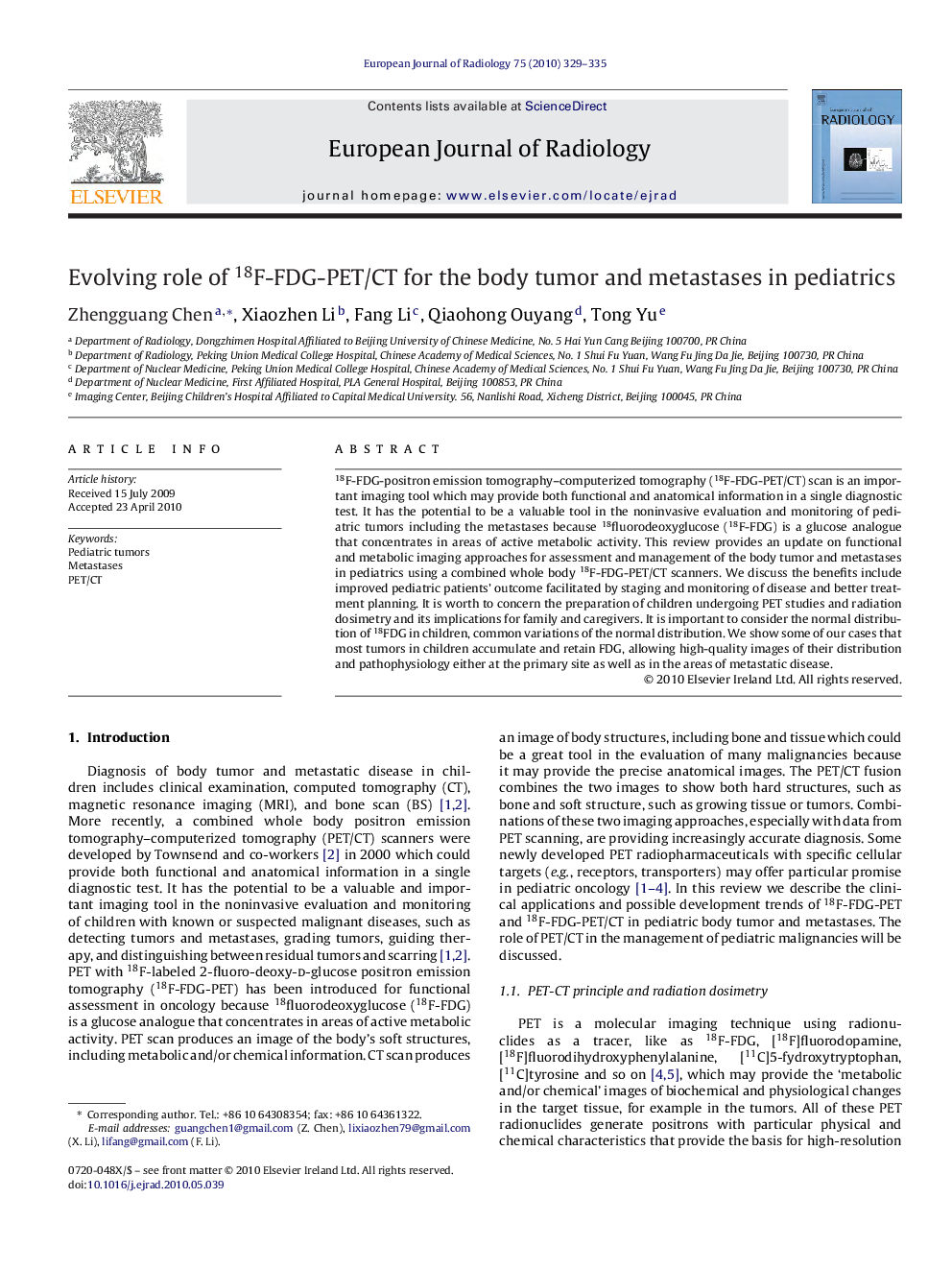| Article ID | Journal | Published Year | Pages | File Type |
|---|---|---|---|---|
| 4226640 | European Journal of Radiology | 2010 | 7 Pages |
18F-FDG-positron emission tomography–computerized tomography (18F-FDG-PET/CT) scan is an important imaging tool which may provide both functional and anatomical information in a single diagnostic test. It has the potential to be a valuable tool in the noninvasive evaluation and monitoring of pediatric tumors including the metastases because 18fluorodeoxyglucose (18F-FDG) is a glucose analogue that concentrates in areas of active metabolic activity. This review provides an update on functional and metabolic imaging approaches for assessment and management of the body tumor and metastases in pediatrics using a combined whole body 18F-FDG-PET/CT scanners. We discuss the benefits include improved pediatric patients’ outcome facilitated by staging and monitoring of disease and better treatment planning. It is worth to concern the preparation of children undergoing PET studies and radiation dosimetry and its implications for family and caregivers. It is important to consider the normal distribution of 18FDG in children, common variations of the normal distribution. We show some of our cases that most tumors in children accumulate and retain FDG, allowing high-quality images of their distribution and pathophysiology either at the primary site as well as in the areas of metastatic disease.
